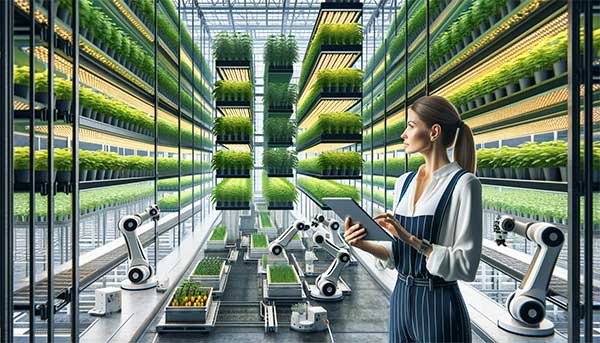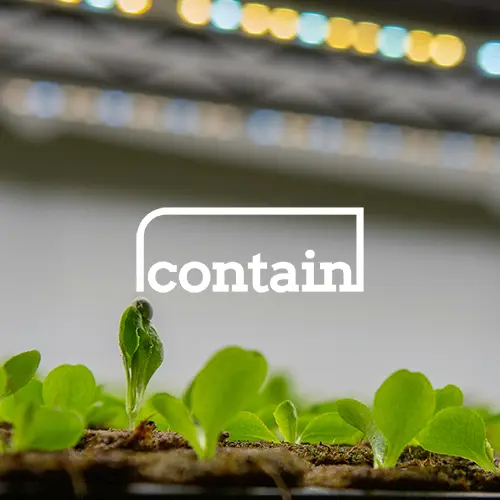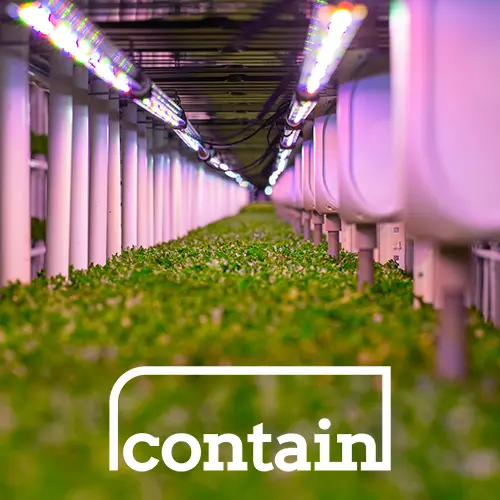January 15, 2024

There’s no hiding that the vertical farm funding environment has been tough over the past year. The bad news is that there’s likely more bad news on the way.
Sadly, we’re not out of the woods on indoor farm closures. The two largest costs that vertical farms face – labor and electricity – are forecast to remain high in 2024. The U.S. Energy Information Administration (EIA), a government agency that tracks such matters, forecasts relatively unchanged electricity prices, but this may well change with increased tension in the key Middle East oil producing region.
What 2024 Holds
Though 2023 saw a slump in vertical farm funding, as we’ve covered elsewhere, we expect this year to be better. Industry consensus appears to be for a pickup in activity, though valuations have definitely reset from the highs of 2021 and 2022. Private equity consultant Cambridge Associates says that implied multiples on invested capital fell from 3.2x in December 2021 to 2.2x by June 2023, for instance.
In the face of these headwinds, how do you up your funding odds in 2024? We think there are a couple of strategies:
1. Consider Interesting Crops & Approaches
90%+ of the pitch decks we see envisage growing leafy greens for local sale, and then developing crops like berries. By and large, private investors are no longer interested in this model unless there’s a specific angle, like being a way to help their local community or repurpose their commercial real estate. Increasingly, we’re asked for models that involve innovative ways to domesticate crops like saffron and berries not growing leafy greens. Others are looking for ways to get to profitability faster, such as fixing the energy challenge by using renewables or waste heat.
2. Become Tech Focused
If you’re wavering between farming or developing your own tech, now’s the time to pick a lane as venture capitalists have tired of the farm/tech hybrid that they primarily funded through the last investment cycle. The good news is that private investors are now more open to funding agtech, especially if it boosts farm economics from the jump.
3. Work AI Into Your Pitch Deck
If you’re already using AI in your farm, whether to optimize growing or to fuel R&D, it’s time to highlight that in your pitch deck. Research firm CBInsights recently noted that early stage AI startups commanded a 20% premium over others that raised in 2023. The premium was larger at later stages. Venture capital moves in waves, and AI is everything right now. Enthusiasm will probably move onto something else within the year.
4. Focus on Capital Discipline
Venture capitalists scrutinize cash flow during downturns, making cost cutting and illustrating a path to profitability all the more important. The rise of generative AI and synthetic humans helps on this front, especially in keeping a lid on PR, marketing and customer service costs. Mixing pre-owned farm equipment, from a reliable source like Equipped, with equipment from established vendors, like the 70+ ones that Contain works with, helps keep a cap on capital costs.
One final consideration is whether chasing venture capital is the right choice for your business at all. Securing investors takes time, especially in downturns. Servicing investors takes time, they will likely require regular updates on your progress and financials. Venture capitalists generally target 30%+ returns on their investment, and that may drive your business in directions that you wouldn’t otherwise choose.
You might want to take a look at alternate funding instead. At Contain, we can help you find lease financing for your indoor farm equipment, for instance. The lenders that we work with generally offer lower interest rates than the returns expected by VCs. They have fewer reporting requirements and get to decisions faster. In some cases, there are tax advantages. Grants, SBA loans and personal loans from your own bank are some other options.
Good luck out there and drop us a line if Contain can help you get growing!

November 2025 Indoor Ag Update: Vertical Farming Raises While Public Markets Stumble

October Indoor Ag Update: Signs of Life in New Indoor Farms and Better Equipment Sales

September Indoor Ag Update: Vertical Harvest Secures Middle East Investment & Market Consolidation

August Indoor Ag Update: M&A Galore & Indoor Specialty Crops Funding

July Indoor Ag Update: Acquisitions Accelerate & Funding Returns

Five Farms Making a Go of Indoor Agriculture

Dyson’s 250% Yield Breakthrough Headlines June AgTech: Vertical Farming Advances, M&A Activity, and Industry Setbacks

Indoor Agriculture Pivots to Home Gardens as Vertical Farming Failures Drive Strategic Reevaluation

Zordi Series B and May 2025 Indoor Agriculture Developments

Freight Farms Bankruptcy and iUNU’s $20M Raise Highlight April’s Indoor Ag Contrasts

Freight Farms Resources: Indoor Ag Companies Stepping Up to Support Freight Farmers
